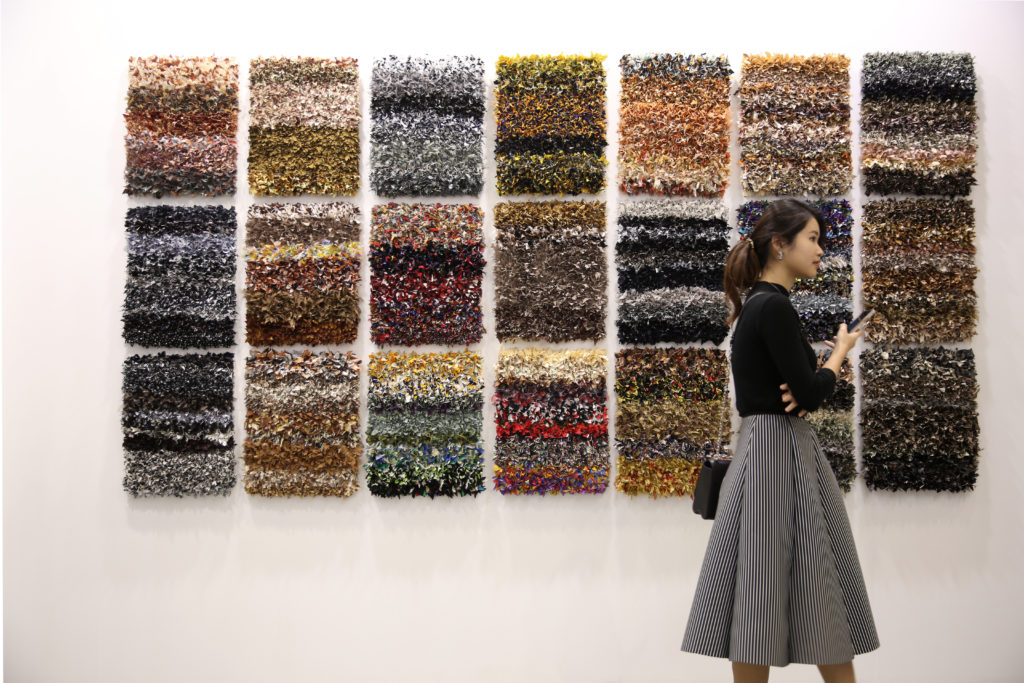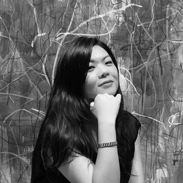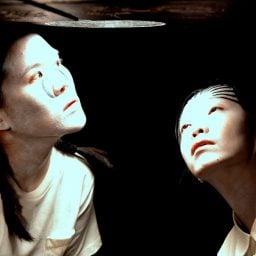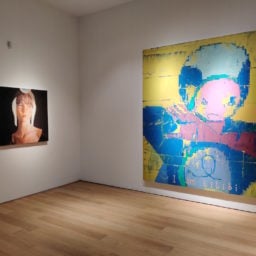The sophomore edition of Taipei Dangdai, the closely watched Taiwanese contemporary art fair, faced an uphill battle. Its dates overlapped with those of S.E.A. Focus in Singapore, another fair with a Southeast Asian focus. Since last August, China has also suspended individual tourists from 47 Chinese cities from travelling to Taiwan, limiting the number of mainland Chinese collectors who could attend. To make matters even more difficult, the recent Taal volcano eruption disrupted flights from Manila, making it difficult for collectors from the Philippines to travel.
So it is especially surprising that against these odds, Taipei Dangdai drew a reported 40,000 visitors during its second edition, which came to an end on January 19. The event drew such international collectors as Richard Chang, Dominique and Sylvain Levy, Shane Ackroyd, Daisuke Miyatsu, and Miwa Taguchi as well as art-world figures like curator Fumio Nanjo and artist Takashi Murakami.
The event—and the special effort made to draw international collectors and galleries alongside local ones—was a reflection of the ambition of Taiwan’s artistic community. Some artists, gallerists, and curators on the island of 23 million people believe that there is no better time for Taiwan to put itself on the world stage as a hub for creative expression and art commerce.
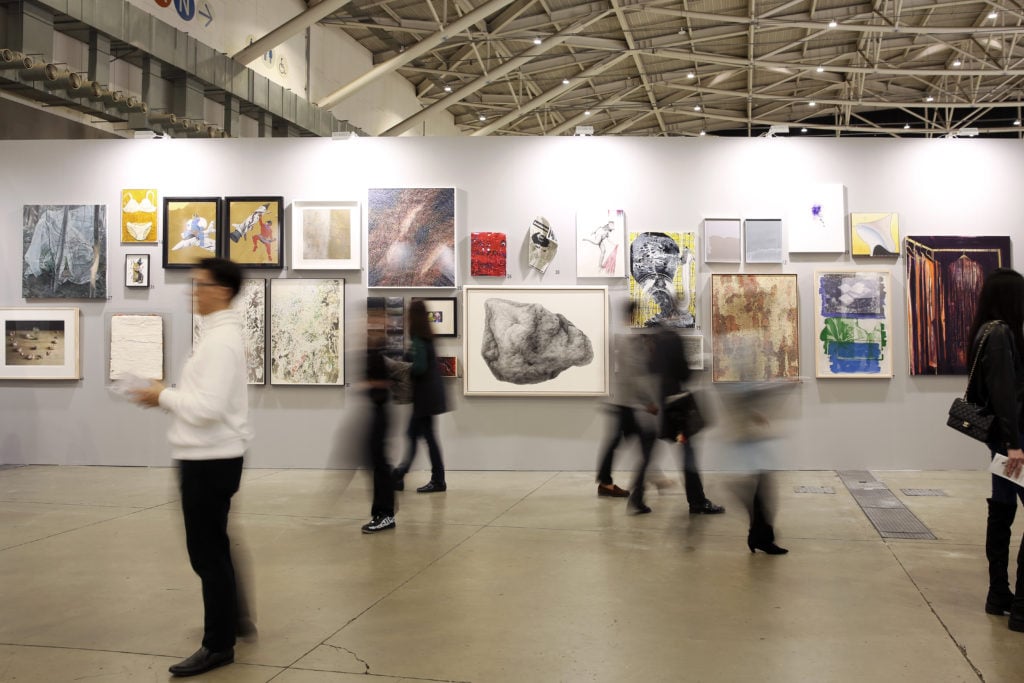
Installation view of Taipei Dangdai, 2020. Courtesy of Taipei Dangdei.
Taiwan is one of several Asian nations looking to fill the breach as Hong Kong endures ongoing political turmoil and enters an economic recession amid the ongoing trade war between China and the United States. The nation is also experiencing a spike in optimism following the recent landslide re-election of president (and culture industry booster) Tsai Ing-wen.
But whether this dream can be fully realized remains an open question. Despite a successful edition of Taipei Dangdai, which positions itself as a fair that brings the international art world to the island, some members of the artistic community wonder if Taiwan has what it takes to earn its place as a global art hub.
In the Aisles of Taipei Dangdai
In the widened aisles of the fair, business was being done, particularly in the five- to six-figure price range.
Hauser & Wirth sold a number of works to local and regional foundations, including Rashid Johnson’s Untitled Escape Collage for $475,000 and a Jenny Holzer painting for $350,000. Lehmann Maupin sold a work by Lari Pittman for $225,000 and one by Tony Oursler for $150,000 to Asian collectors. David Zwirner sold multiple works by Luc Tuymans, including one for $1.5 million, the biggest sale publicly reported at the fair. Works by some Taiwanese artists also found buyers: Sean Kelly and Galerie du Monde sold out all the works they brought by Wu Chi-Tsung on the first day.
Some galleries said sales were slow at the beginning of the fair but that collectors returned on the last day to close deals. A2Z Gallery reported finishing strong with late-in-the-game sales of works by Chinese artist Ma Desheng and Serbian painter Vladimir Velickovic priced between €30,000 and €40,000 ($33,000–44,100).
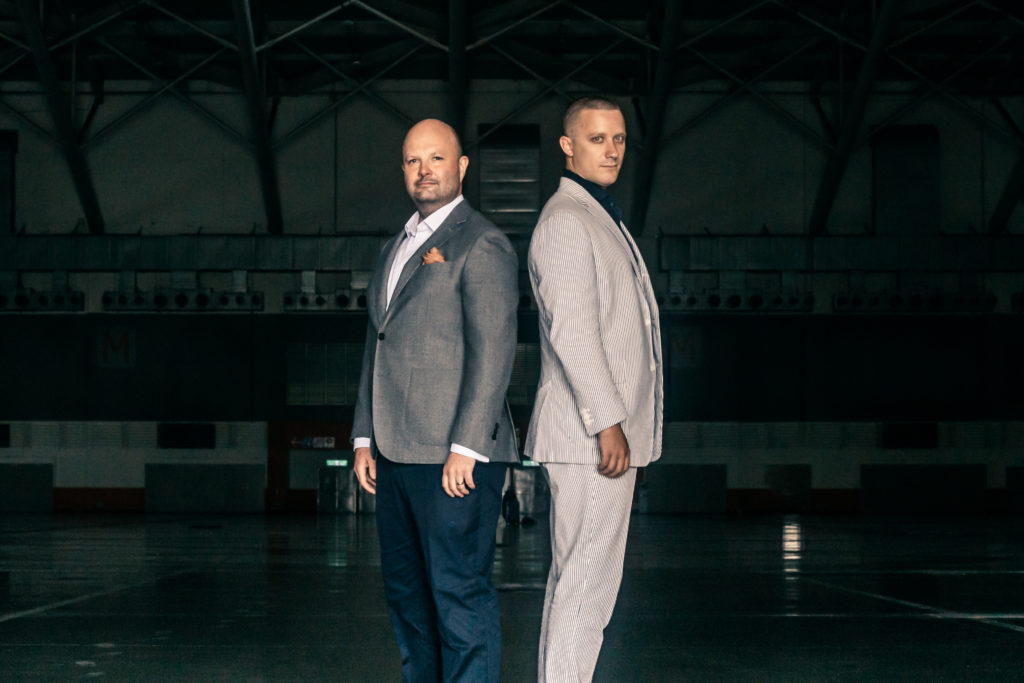
Magnus Renfrew and Robin Peckham, Courtesy of Taipei Dangdai. Photo: Sean Wang.
Taipei Dangdai’s co-director Magnus Renfrew, who a decade ago launched ArtHK, the fair that would go on to become Art Basel Hong Kong, believes Taipei Dangdai has the same potential to transform the local art scene—something people in Taiwan seem to have immediately understood and gotten behind, he adds.
But while coordinating with local art institutions will help the fair maintain its regional identity and draw in members of the global art world, he says more must be done for Taiwan to emerge as an increasingly attractive commercial center.
“I’m always asked what can be done to create a viable art market,” Renfrew said. And looking to Hong Kong as precedent, “I’d always say, cut the tax.” While the tax situation in Taiwan is not onerous, Renfrew explained, it is “complicated for people to understand their obligation. We have accountancy firms advising international gallerists and our official shipper has been very helpful. But in the end, no tax wins.”
Make Taiwan a Great Art Market Again?
This would not be the first time Taiwan has emerged as a regional art-market center. Taiwan was a key hub for the region’s art trade until the late 1990s, when the focus shifted to Hong Kong and mainland China. Hu Yung-fan, an independent curator, told the Legislative Yuan in October that Taiwan’s art market share in the greater China region—Hong Kong, mainland China, Taiwan—had shrunk from 97 percent in 2001 to just two percent in 2018.
“Taiwan got slightly forgotten,” said the gallerist Sean Kelly, who runs a project space in Taipei. “Taiwan has had serious, international collectors for many generations. And now with what’s happening in Hong Kong and China, Taiwan has an interesting opportunity. But is Taiwan going to embrace that?”
Kelly said reducing tax and offering more economic incentives that encourage the free movement of art will be crucial as more businesses explore opportunities outside of Hong Kong and mainland China. And since Japan and South Korea remain relatively self-contained and hard to break into, Taiwan and Singapore have emerged as leading alternatives. Taiwan’s freedom and democracy puts it in a good position, he added.
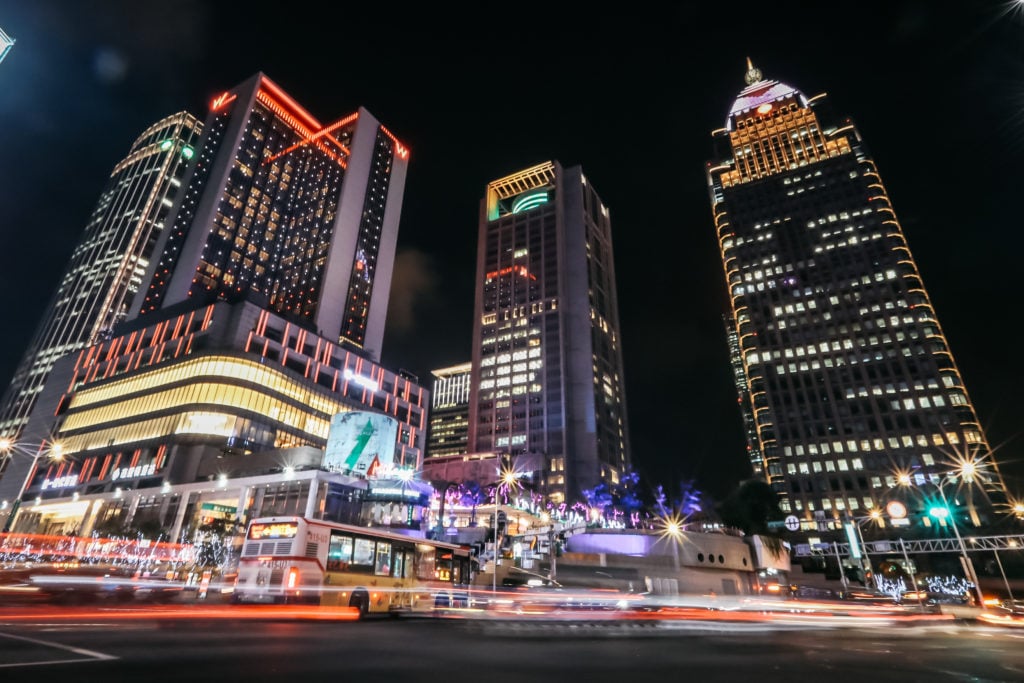
The city of Taipei. Courtesy of Taipei Dangdei.
Now, some government officials and art-market figures are hoping to capitalize on that opportunity. At a Legislative Yuan public hearing last October, Taiwanese billionaire and mega-collector Pierre Chen lamented that the state had fallen behind due to its taxation of art. He supported a legislative proposal to reduce the tax on income generated from art auctions—a proposal that also drew criticism from those who said the change would only favor the rich and violate the fairness of the existing system.
In November, the Ministry of Culture reached an agreement with the Ministry of Finance to essentially meet the art boosters halfway. They agreed to waive the sales tax on artworks on public display at a local gallery exhibition, even if they are sold after a given show ends—providing that a letter of intent of sale is sent to authorities while the work is still on view.
The art industry, however, is still not satisfied. Jack Chen, director of the Taiwanese gallery 182ARTSPACE, said that the current taxes—which include a five percent sales tax as well as other duties—add up to a hefty percentage of an artwork’s total price.
“We now have this opportunity, but it’s up to the government on whether to seize the chance to make Taiwan a more competitive art market,” Chen said.
More Than Just Money
While boosting the art market is important to the business side of the art ecosystem, it is not the only element that will create an enduring and vital scene. Some members of Taiwan’s art community are more concerned with finding ways to connect with the global art world beyond commerce. They believe that arts and culture are key to building bridges—much more effective than ordinary diplomacy, which Taiwan has been struggling with under continuous and increasing pressure from China.
“Taiwan is not officially a country and we do not have diplomatic relations with most places,” said Yuki Pan, a former director of MOCA Taipei. “But do we need diplomatic relations? I feel that connections among people are much more effective.”
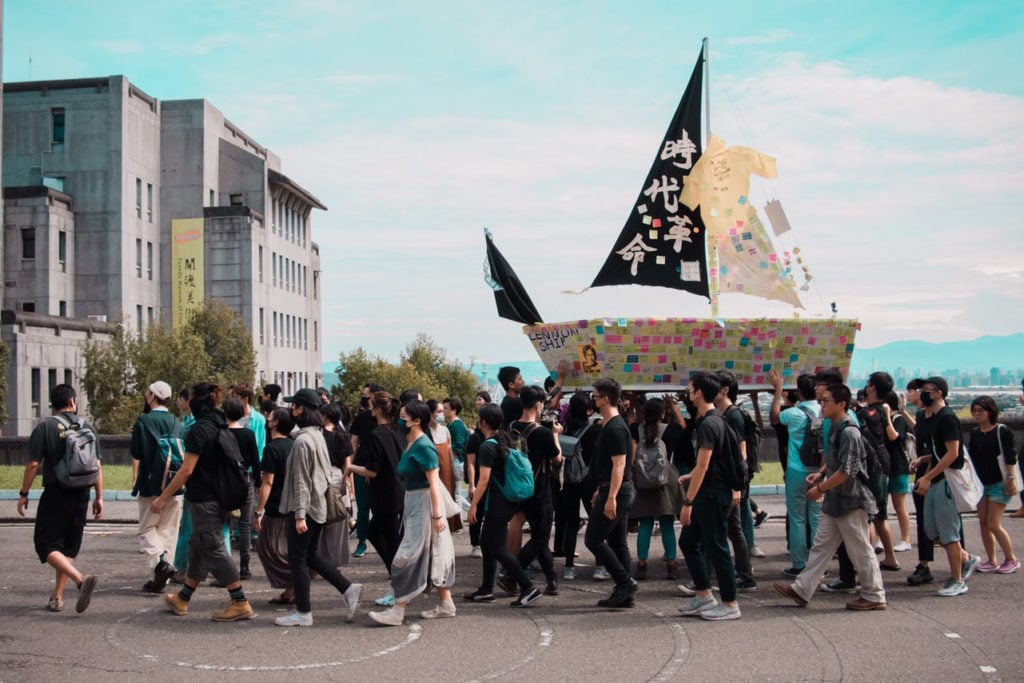
TNUA Concern Group for HK Anti-Extradition Bill, Lennon Ship (2019) at Co/Inspiration in Catastrophes. Courtesy of Museum of Contemporary Art, Taipei.
When Pan was the director of Taipei’s contemporary art museum, it staged the first-ever contemporary art show on LGBTQ issues at a government-backed museum in Asia. Two years later, in 2019, Taiwan became the first in the region to recognize same-sex marriage.
MOCA Taipei’s current exhibition, “Co/Inspiration in Catastrophes,” which Pan co-curated with Huang Chien-Hung, follows a similar path. The exhibition, which presents work by 16 artists including Chinese dissident Ai Weiwei and Pakavulay, a Taiwan art studio focusing on the stories of indigenous tribes on the island, reflects on the impact of catastrophes on humanity.
“In the past, I thought international diplomacy was just about diplomatic relations. But now, I feel that it is about how we relate to each other living in an ecology,” Huang said. “We are living in the age of catastrophes, be it economic, political, or natural. They come for us, and we want to talk to artists who connect disasters with us.”
Looking to the Future
Taiwan, which became a self-governed region as Kuomintang fled mainland China after being defeated by the Communists during the civil war in 1949, has long been isolated on the global stage. But pressure from the People’s Republic of China on Taiwan has been increasing since Tsai, who represents the pro-independence Democratic Progressive Party, was first elected president four years ago.
Seven countries have already severed ties with Taiwan, leaving just 15 nations that have formal diplomatic relations with the island. Taiwan is constantly shunned from international organizations (despite its technological and medical advancement, for example, it is still barred from the WHO amid the spreading of the deadly Wuhan coronavirus).
But individual cultural initiatives have the potential to get around these complex international obstacles. Huang, for example, recently led an exchange program to Mexico, which does not have a formal diplomatic relationship with Taiwan.
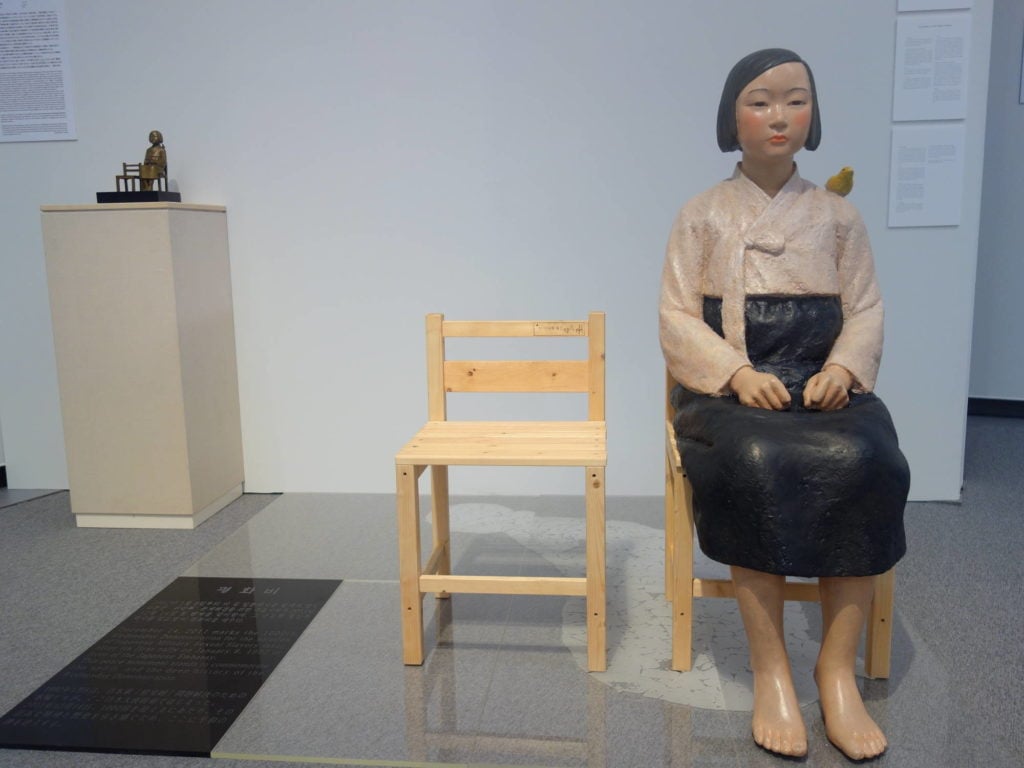
Kim Seo-kyung and Kim Eun-sung, Statue of a Girl of Peace (2011). Courtesy of the artists.
Li-Chen Loh, MOCA Taipei’s new director, aims to continue this tradition of openness and exchange through strengthened collaboration with overseas institutions. For her first major project, she plans to bring the controversial work depicting sexually enslaved “comfort women” during World War II by South Korean artists Kim Seo-kyung and Kim Eun-sung that was abruptly censored at the 2019 Aichi Triennale.
The show, scheduled to run from April 18 to June 7, will restage the original 2019 Japanese exhibition and include additional works that chronicle the dark history of Taiwan under martial law from 1949 to 1987.
Loh revealed that after the initial news of the exhibition came out, she received negative comments from those who worried it might offend Japan. But she is not backing down.
“The exhibition is in fact also a reflection of the current circumstances of Taiwan and our history,” she said. “Art is not to offer a solution, but to ask the right questions that will offer a critical perspective to look into these issues. As a contemporary institution, we must speak up for issues like freedom, human rights and justice.”
